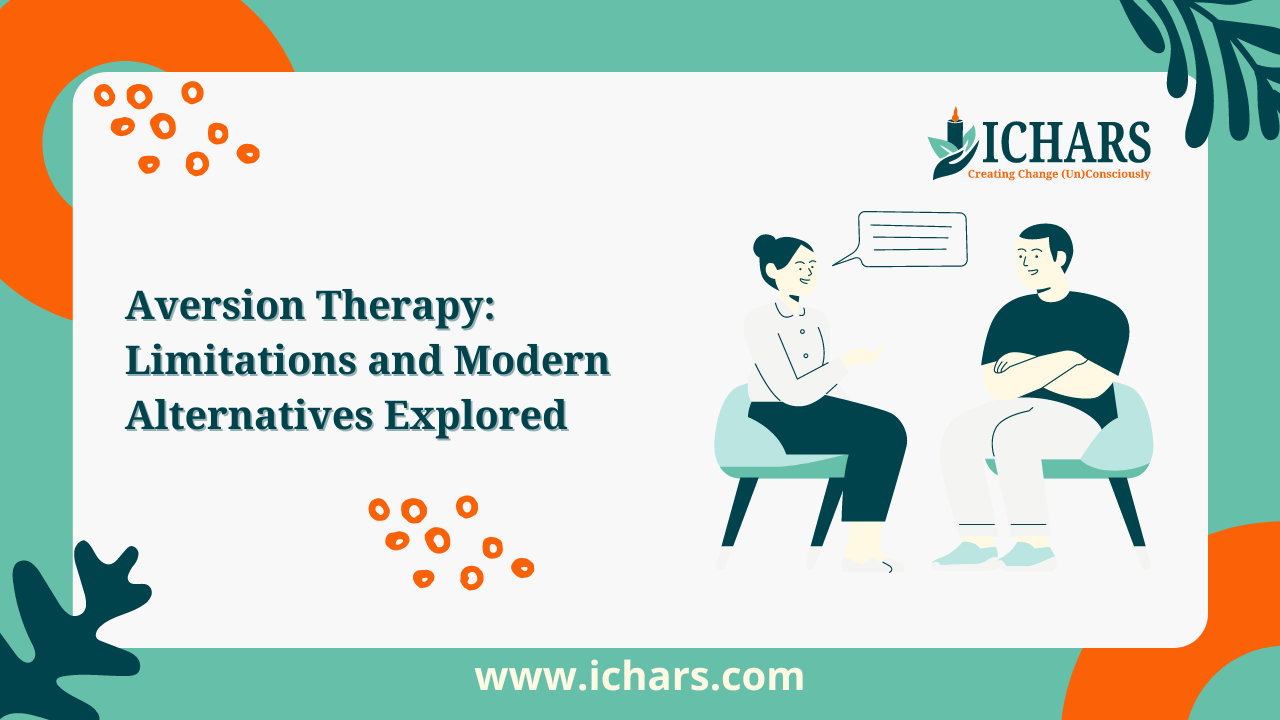Aversion therapy is a behavioural treatment method that aims to reduce or eliminate undesirable behaviours by associating them with unpleasant stimuli. Historically, it has been used to address habits such as smoking, alcoholism, and other addictions. The goal is to create a negative response to the unwanted behaviour, thereby discouraging its occurrence.
Aversion Therapy: Behavioural Approach
Theoretical Foundations

Aversion therapy is rooted in behaviourism and classical conditioning, concepts developed by psychologists like Ivan Pavlov and B.F. Skinner. These theories suggest that behaviours can be learned and unlearned through associations with stimuli.
Mechanisms of Aversion Therapy
The core mechanism involves pairing an unwanted behaviour with a negative stimulus. For example, a person trying to quit smoking might be given a mild electric shock each time they light a cigarette. This creates an aversion to the behaviour by making it unpleasant.
Techniques in Aversion Therapy
- Chemical Aversion: Using emetic drugs to induce nausea when the undesirable behaviour is performed.
- Electrical Aversion: Applying mild electric shocks as a deterrent.
- Imaginal Aversion: Visualizing negative consequences to create a mental aversion to the behaviour.
Efficacy of Aversion Therapy
Studies have shown mixed results. While some individuals benefit, many others experience only short-term success. The relapse rates are high, and the emotional toll can be significant.
Limitations and Side Effects of Aversion Therapy
- Ethical Concerns
Aversion therapy can raise ethical issues, particularly regarding the consent and autonomy of the client. The discomfort or distress caused by the negative stimuli can be considered unethical, especially if the client feels coerced or pressured into the treatment. - Emotional and Psychological Impact
The use of unpleasant stimuli can lead to increased anxiety, fear, and negative self-concept. These emotional side effects can be counterproductive, potentially exacerbating the issues rather than resolving them. - Relapse and Long-term Effectiveness
While aversion therapy might suppress the behaviour temporarily, it often fails to address the underlying causes. This can lead to high relapse rates, as the fundamental issues driving the behaviour remain unresolved.
Cognitive Hypnotic Psychotherapy (CHP): An Integrative Approach

CHP is a holistic therapy method that integrates various psychological theories and techniques into a cohesive framework. By addressing cognitive processes, emotional dynamics, behavioural patterns, and subconscious influences, CHP provides a nuanced approach to mental health issues.
Techniques in CHP Relevant to Aversion Therapy
- Anchoring and NLP Techniques: Using specific triggers to induce positive mental states.
- Hypnotic Regression and Reframing: Revisiting past experiences under hypnosis to reframe negative memories.
- Metaphorical and Imagery-based Interventions: Employing stories and imagery to bypass resistance and instill new perspectives.
Achieving Aversion Therapy Objectives with CHP
- Behavioural Change through CHP
CHP addresses unwanted behaviours through subconscious reprogramming. Techniques like anchoring and the SWISH pattern help clients associate positive states with desired behaviours, effectively replacing negative associations. - Emotional and Cognitive Reframing
By changing the emotional response to triggers, CHP helps clients develop healthier reactions to situations that previously elicited negative behaviours. Techniques such as N-Step Reframing and Meta Model questioning are crucial for this process. - Addressing Underlying Causes
CHP delves deeper into the root causes of unwanted behaviours, providing long-term solutions. Hypnotic regression and inner child healing allow clients to uncover and resolve deep-seated issues, leading to sustainable change.
Advantages of CHP Over Traditional Aversion Therapy
- Ethical and Client-Centered Approach
CHP emphasizes consent and collaboration, making the therapy process more ethical and respectful. Interventions are customized to fit individual needs, enhancing client engagement and satisfaction. - Holistic and Integrative Benefits
By addressing cognitive, emotional, and behavioural dimensions, CHP offers a more comprehensive treatment. Techniques from mindfulness and positive psychology further enhance the therapeutic process. - Sustainable and Long-Term Change
CHP reduces the risk of relapse by thoroughly addressing the underlying issues across multiple dimensions. This approach fosters self-efficacy and personal empowerment, leading to lasting positive changes.
Case Studies and Practical Applications
Case Study 1: Smoking Cessation
- Traditional Aversion Therapy Approach: Using emetic drugs to create an aversion to smoking.
- CHP Approach and Outcomes: Employing techniques like anchoring and regression to address the subconscious drivers of smoking, resulting in long-term cessation and improved emotional well-being.
Case Study 2: Alcohol Use Disorder
- Comparative Analysis: Traditional aversion therapy might use electrical aversion, whereas CHP focuses on reframing beliefs and resolving past traumas contributing to alcohol use.
- Client Feedback and Long-term Results: CHP clients often report greater satisfaction and lower relapse rates.
Case Study 3: Behavioural Addiction
- Application of CHP: Techniques like inner child healing and metaphorical interventions help clients understand and change the emotional triggers behind their addictive behaviours.
- Effectiveness: These methods lead to deeper, more sustainable changes compared to the surface-level suppression in traditional aversion therapy.
Conclusion
While traditional aversion therapy can be effective in some cases, it has significant limitations and ethical concerns. Cognitive Hypnotic Psychotherapy offers a more holistic and ethical alternative, achieving similar behavioural change objectives without the adverse effects associated with aversion therapy.

